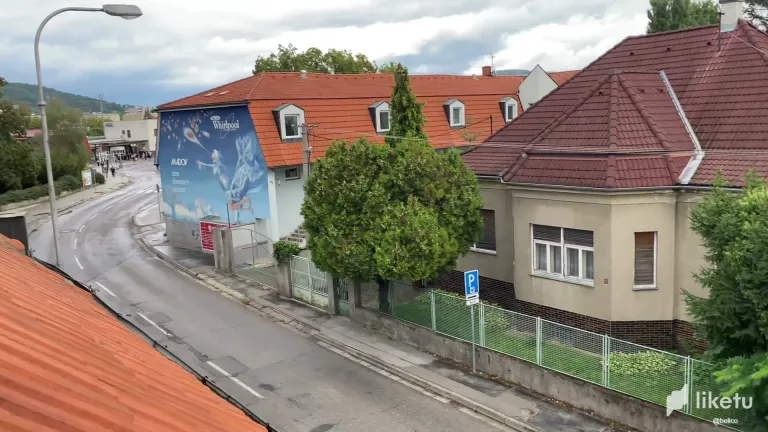
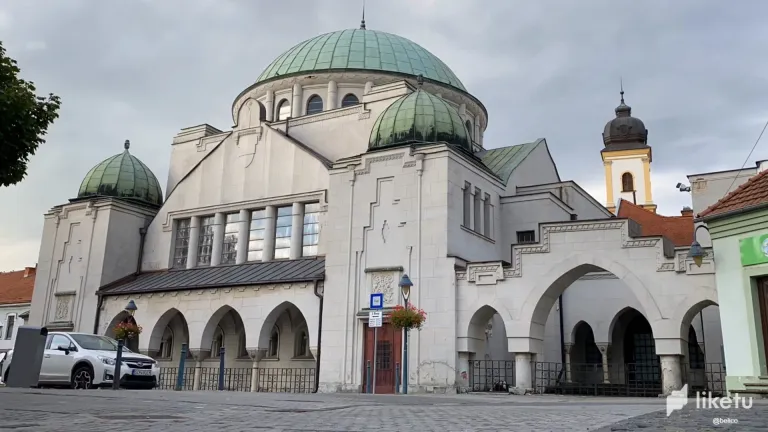
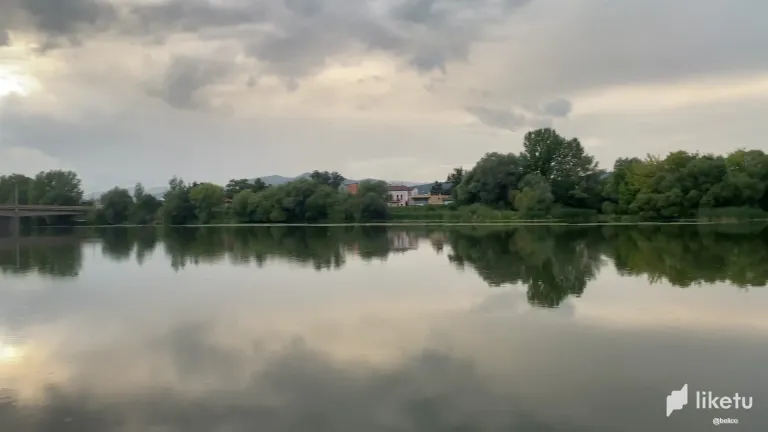
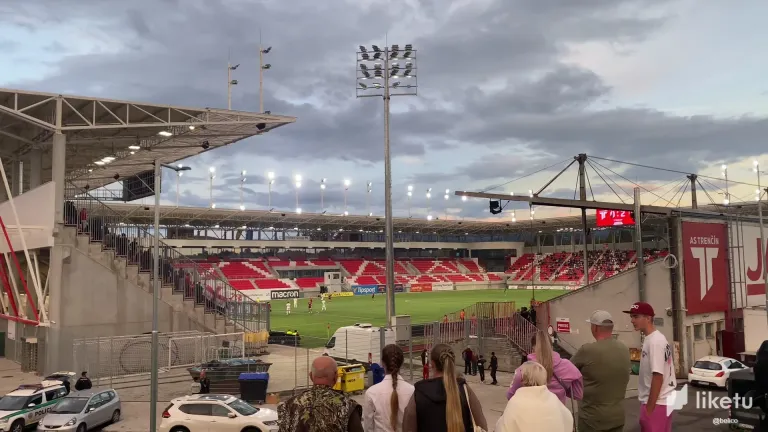
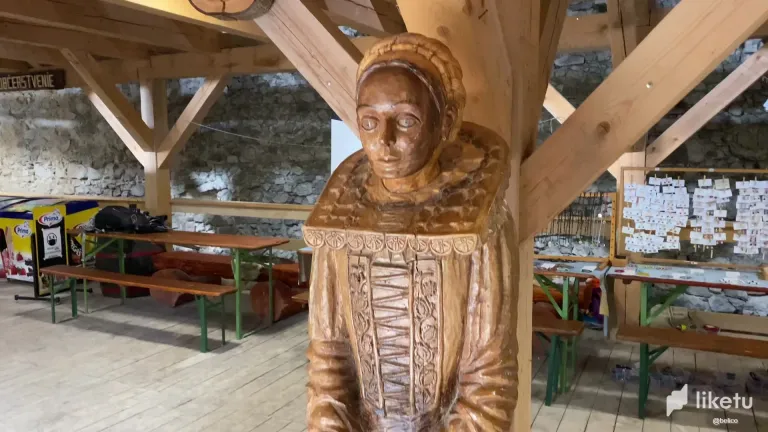
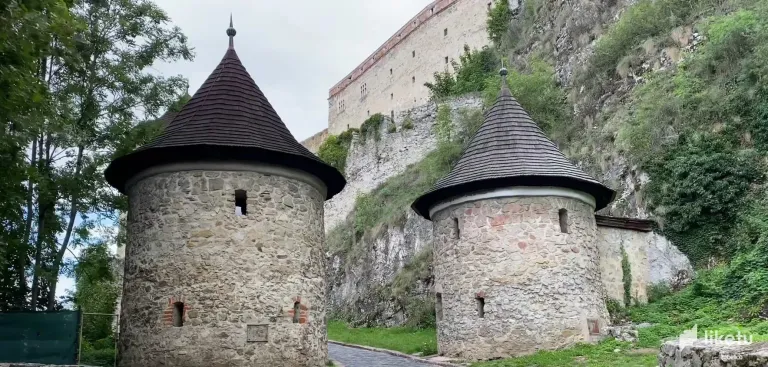
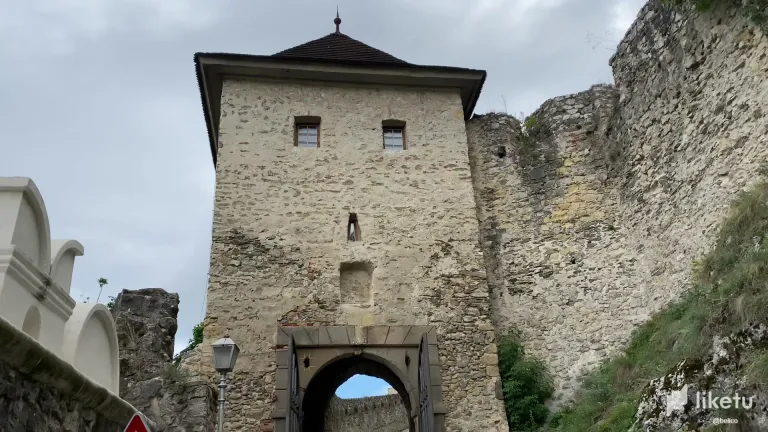

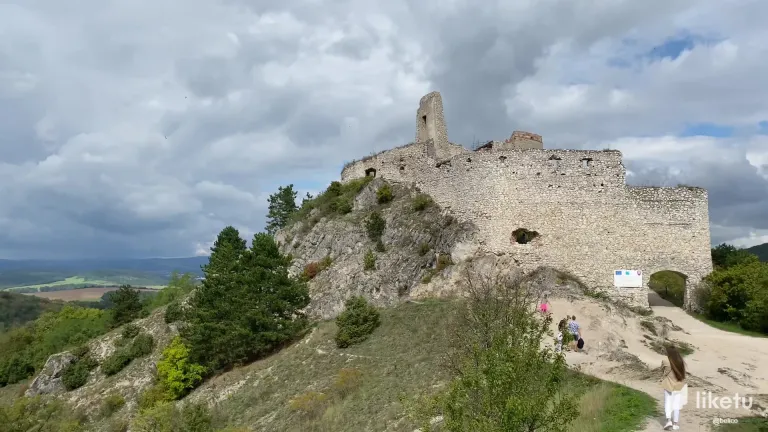
Hello everyone. Last month we went to the city of Trenčín. As soon as we arrived, we settled into the hotel so we could start exploring the city comfortably. Our hotel room was number 3, like a loft in Carlson's apartment. It had a view of the city and was close to the center.
Trenčín is an industrial city located 10 km from the Czech border in western Slovakia. Today Trenčín is home to 57,000 people and serves as the administrative center of its district and region. It is one of Slovakia's most important cities with a rich cultural and social life. One of the most popular events attracting visitors to the city is the summer music festival, which draws over 25.000 people for a day-long event. The city hosts various international exhibitions, including the Trenčín Fashion City and film festival. It also serves as a center for military industry, housing an aircraft maintenance factory.
We strolled around the city. There were concerts in the city tower and inner courtyards. It seems there's always some event happening here on weekends. It's a fun place for kids, especially the fountain, which always echoes with laughter. In winter there's an ice rink around the statue. We saw a city fountain here, resembling a well with water spurting out. Just across from it we spotted a synagogue.
We had a meal here, so our faces were smiling. We spent 25 Euros for a lunch for two. However we were surprised when they brought napkins to the table. Like elsewhere in Europe, there's something about service here. They don't provide napkins. At most the cutlery comes wrapped in a napkin.
The city architecture is quite interesting, with the old town behind the bank. However there's also a new building made of glass that doesn't quite fit in. We continued to a bike park. The residential building looked like a military building. We passed two cathedrals with different architectures. Nearby there were train tracks, a pedestrian path and a walking trail, all well-maintained. It was a pleasant surprise. The city is along the riverbank, with a calm current that's almost non-existent compared to the Danube.
We walked along the riverbank, passing a railway bridge leading to the castle. There was a stadium here and luckily, there was a match going on. We could hear the fans cheering. It's quite a different stadium; you don't need tickets. You can just stand by the side and watch the match. You might not get a perfect view of corner kicks, but overall, it's not bad.
After touring the city at night, we returned to the hotel and rested. We saved the most interesting part for the next day. We returned to the central promenade area the next day, checked out of the hotel, parked the car and wanted to wander around the city a bit more. Then we went to the castle, the city's largest gem.
It was 11:30 and we were the first guests. For about an hour and a half, no one else was there. Then we went upstairs. There were clocks dating back to the 1930s and clocks looking in all four directions. castle, square and the houses, which was the castle. We approach Matusova and accomodation across.
The room was filled with coats of arms and there was another staircase leading up. In the top room there were more coats of arms and a door. We climbed up and the view was magnificent. From the top we could see the stadium, the river and more.
Trenčiansky Hrad is one of Slovakia's national cultural monuments. According to archaeologists, the castle was strategically built in the early 11th century. It is one of the rare castles that resisted the devastating Mongol invasion in 1241. A major fire on July 11 1790, destroyed the city and the castle. Until the mid-19th century, the castle lay in ruins and restoration work began only in the 20th century.
There's a museum here known as the Palačev Museum, highly recommended by many. It consists of two small rooms, but the guide tells a very impressive story.
Afterward we went to Čachtice Castle. Parking costs 3 Euros and it's about a 1.2 km walk uphill to the castle. The elevation difference is 100 meters. Čachtice Castle is located 35 km away from Trenčiansky. This castle is more of a ruin with an exhibition inside.
The interior of the castle has low ceilings and an installation resembling a fireplace filled with wooden charcoal. It bothered me to see people writing on the castle walls.
Slovakia has many castles and Čachtice Castle is known for its bloody history. It is said that Elizabeth Bathory bathed in the blood of young girls to stay young, allegedly killing around 2000 girls, according to the Guinness records. There's also a torture device exhibited here.
There are entertainment areas for children, a souvenir shop and a café inside the castle.
Čachtice Village is located at the foot of the castle and has a population of about 4000. There's a hiking trail from the village to the castle. We returned to Trenčiansky. Our next stop was the Velká Skalka Monastery, a historic pilgrimage site. It was closed on Sunday, but we explored its surroundings. Skalka Monastery was built in the 12th century and according to legend, Saint Benedict lived in a cave here. Many pilgrims visit here every year.
Next to the Skalka Monastery complex is a cave recognized as a natural heritage site. The depth and darkness of the cave are quite impressive. There are two caves here, one measuring 38 meters deep and 22 meters wide.
The monastery grounds are well-maintained with a parking area, resting places and a bridge. There's also a bicycle path. This was the last place we visited before heading back home. I hope you found it interesting.
For the best experience view this post on Liketu

